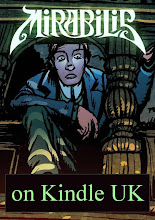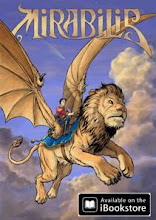 LucasArts' Grim Fandango was a computer game by the legendary Tim Schafer that drew its inspiration from el Dia de los Muertos - the Mexican version of Halloween.
LucasArts' Grim Fandango was a computer game by the legendary Tim Schafer that drew its inspiration from el Dia de los Muertos - the Mexican version of Halloween.The setting is El Marrow, the city where the souls of the recently dead arrive to begin their journey to the afterlife. The land of the dead is depicted as sleepy and full of secrets. It has a sultry, dreamlike quality and yet things happen there.
By contrast, just over that border from which no traveller returns, the land of living is composed of brashly hued snapshots, styled on the 1950s work of Pop Artists like Richard Hamilton. It's a garish, glossy world which is full of bustling action, the sound and fury of life which strikes us as superficial now that we’ve strolled through El Marrow and had a glimpse of eternity.
Day of the Dead imagery juxtaposes life and death. In an inspired inversion, characters in the Grim Fandango world are despatched with guns that sprout flowers through their skulls and ribcages. The effect is beautiful and eerie, and at the same time more effectively shocking than the desensitizing carnage found in (yawn) so many videogames.
Because the plot involves mystery and danger, and the hero never knows who he can trust, Grim Fandango's film noir styling works perfectly. The guides of the dead are depicted like private eyes (though they are in fact travel agents) and their offices are located in an art deco building typical of the 1930s. Except that there's a subtle twist. Where art deco drew from ancient Egyptian design, the Grim Fandango version uses a restyled art deco substituting motifs from the Pre-Columbian civilizations.
Grim Fandango is far and away the most original game setting ever devised. It stands a million miles above the tedious floodwaters of super-soldiers, zombies, cloned hitmen, big guns, and monsters that always look exactly like Alien. Unlike just about every other videogame in existence, this actually would make a first-rate movie, TV series or graphic novel. Or all three.
So why have you never heard of it? Because it was an adventure game, in the days that adventure gaming meant stuff like tying a coat-hanger to a balloon to hook a message off a tree. And no, I don’t know why anybody ever thought that was fun either. It was like watching an animated movie where somebody keeps hitting pause and making you solve a Sudoku before you can see another few minutes.
But I’m thinking that old-style adventure gaming might turn out, with a very slight spin, to be just what those families around the entertainment hearth are looking for. Suppose that our hero (the very likeable Manny Calavera) wasn’t a damnable brainless puppet that you had to steer around while cursing at his inability to line up with objects. Suppose that he turned and asked you what he should do. Maybe all you have to do is give him the hint by pointing to something, so he's more like a character you can have a pretend relationship with. Suppose that, if you couldn’t be bothered to work it out, you could just give up and he’d figure it out for himself.
Or you could even say you don’t want to play it as a game, you just want to sit back and let Manny solve his own problems. Then it could be an animated movie that would be a darn sight more inventive than Shrek.
Just using the art, writing and audio assets that are already there, Grim Fandango could be turned into a graphic novel and an iPhone comic with just a few weeks’ work. Ay, caramba! I’d do it myself – right now, for nothing, out of sheer love of Tim Schafer’s brilliant creation. Hear that, LucasArts? Please do something with this great, great property! Make lots of money using the material you already have! Trust me on this. You don’t want to leave Manny in limbo.
























Couldn't agree more. It still gets my vote for the best computer game of all time, even after all these years.
ReplyDelete